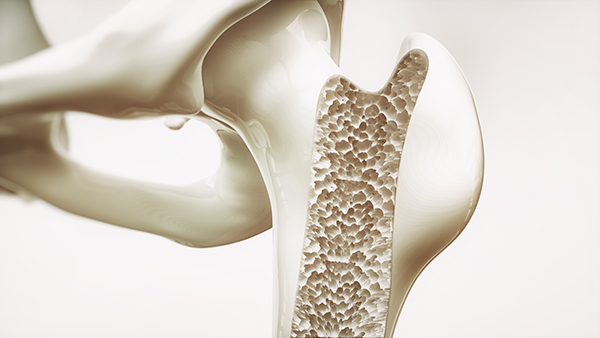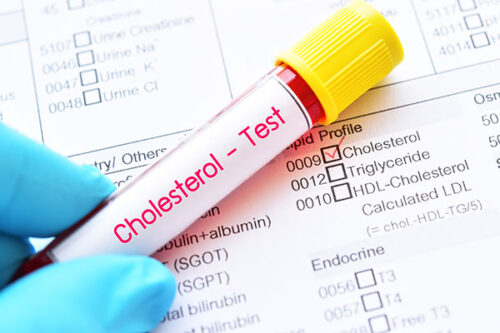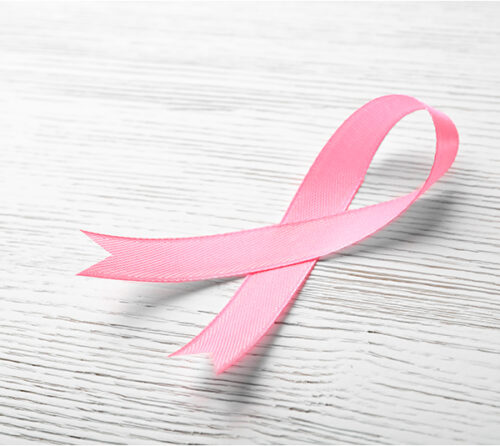Osteoporosis: The Truth About Women’s Bone Health
Updated March 18, 2022

By John McDougall, MD
Two-thirds of Women Have Weak Bones. Or Do They?
A large study published in the New England Journal of Medicine included 5,470 women from three communities forming a representative spectrum of women living in the US.1 Of these women, 1,255 were considered to have normal bones, whereas 4,215 suffered from osteoporosis or osteopenia. (Osteopenia is a milder loss as measured by the BMD and is due to the natural thinning of the bones that occurs as women age and does not result in unprovoked fractures.) The findings of this study mean that of all women over the age of 67 living in the US, 77% are in need of more testing and treatment for their “diseased bones.” How could this be?
As the name “bone mineral density” (BMD) implies, this test measures the amount of minerals in the bones, and not necessarily their strength for resisting fractures.
The mineral content of bones decreases due to physiological changes intended to maintain the highest efficiency of a woman’s body. During a woman’s reproductive years an extra depot of minerals is stored for the future growth of her fetus and for producing her breast milk for two years postpartum. Assessing her bones with a BMD test during these times will detect a plentiful supply of minerals. After menopause (normally by 48 years of age) carrying around an extra two pounds of minerals serves no practical purpose and is a burden – she releases this unnecessary baggage as is reflected by the results of her BMD. She fails because the standard for which she is compared is inappropriate and unrealistic: “Normal” is the bone status, as measured by the BMD, of a healthy 30-year-old adult female in her prime reproductive years.
Fortunately, the odds are a woman after age 67 does not have “weak bones,” even after failing the BMD test, because the mineral content of a woman’s bones has little to do with their strength. Bone strength comes from its dense, pliable connective tissues, which are made up of proteins, fats, carbohydrates, cells, fibers, and fluids. Unfortunately, clinically significant osteoporosis which results in fractures is difficult to diagnose before an event: an unprovoked fracture with underlying weak bones.
Diet, Sunshine, and Exercise Make Strong Bones
A woman’s bones are designed to last a lifetime when cared for properly. Sunshine (producing vitamin D), moderate exercise, and an alkaline diet are the keys to strong bones. Osteoporosis is caused by several controllable factors; however, the most important one is the foods we choose to consume, especially the amount of animal foods. Meat, poultry, fish, seafood and hard cheeses (such as parmesan cheese) are very acidic in composition. After eating them, our body must neutralize these loads of acids. The bones are the primary source of buffering materials, carbonates, citrates, and other alkaline materials, released to neutralize these dietary acids.2
Fruits and vegetables are alkaline in composition, and as a result, a diet high in these plant foods will neutralize acid from other sources and help preserve the bones. Grains and legumes are slightly acidic, but the body can easily handle their small acid loads without causing significant bone loss. Animal foods are six to ten times more acidic than are grains and legumes. The levels of acidity produced from a diet of meat, poultry, fish, eggs and cheeses exceed normal physiologic capabilities, and as a result, bone is destroyed in an effort to maintain the body’s acid-base balance (pH 7.4). In the overall picture, the McDougall Diet is alkaline. Not all vegan diets are so bone-friendly. Isolated soy proteins, found in abundance in the fake meats and some “non-dairy foods” of so many health-conscious people these days, also cause significant losses of calcium.3
The Last Step: Medications
After the full benefits from sunshine, exercise, and diet have been taken advantage of, the last efforts will be the judicious use of medications. Acidity in the body can be neutralized by taking over-the-counter antacids, such as TUMS (calcium carbonate). The alkaline carbonate, not the calcium, causes the benefits. Any antacid (sodium bicarbonate, potassium bicarbonate, etc.) will work. Two tablets of TUMS daily is my recommended dose only for those women at high risk of a fracture. Calcium supplements do have side effects, including iron deficiency, constipation, and an increased risk of death from heart disease. I do not recommend antacids that are made from citrate (like calcium citrate) because these forms cause the intestine to absorb more aluminum from the diet.4 Chronic aluminum poisoning causes Alzheimer’s Disease. See the June 2004 and June 2017 McDougall Newsletters on Alzheimer’s Disease.
As a final medical step, when I am very concerned that a woman is going to suffer in the near future a serious fracture due to weak bones, I will use estrogens applied to her skin daily. (I typically prescribe a combination of estradiol .05 mg with 20 mg of progesterone in one gram of cream base to be applied topically.) Estrogens always build bone, but have important side effects. A more complete description of hormone replacement therapy (HRT) is found in The McDougall Program for Women.
I never use the most commonly prescribed class of medications, bisphosphonates (Fosamax, Actone, Bonevia, Zometa, Aclasta, Didronel, Bonefos, Loron, Skelid, etc.). These medications have very serious side effects and are of little benefit, especially for women with relatively healthy bones (those diagnosed with osteopenia). See this article for more on these medications.
References:
1) Gourlay ML, Fine JP, Preisser JS, May RC, Li C, Lui LY, Ransohoff DF, Cauley JA, Ensrud KE; Study of Osteoporotic Fractures Research Group. Bone-density testing interval and transition to osteoporosis in older women. N Engl J Med. 2012 Jan 19;366(3):225-33.
2) García-Gavilán JF, Martínez A, Konieczna J, Mico-Perez R, García-Arellano A, Basora J, Barrubés L, Goday A, Canudas S, Salas-Salvadó J, Bulló M. U-Shaped Association between Dietary Acid Load and Risk of Osteoporotic Fractures in 2 Populations at High Cardiovascular Risk. J Nutr. 2021 Jan 4;151(1):152-161.
3) Jane E. Kerstetter, Diane E. Wall, Kimberly O. O’Brien, Donna M. Caseria, Karl L. Insogna, Meat and Soy Protein Affect Calcium Homeostasis in Healthy Women, The Journal of Nutrition, Volume 136, Issue 7, 1 July 2006, Pages 1890–1895,
4) Nestel AW, Meyers AM, Paiker J, Rollin HB. Effect of calcium supplement preparation containing small amounts of citrate on the absorption of aluminum in normal subjects and in renal failure patients. Nephron. 1994;68(2):197-201.
Recommended Articles

Cholesterol – When and How to Treat It

When Friends Ask: “Why Did You Quit Meat?”






